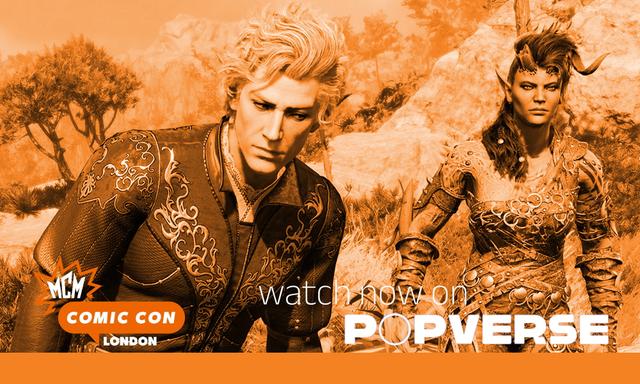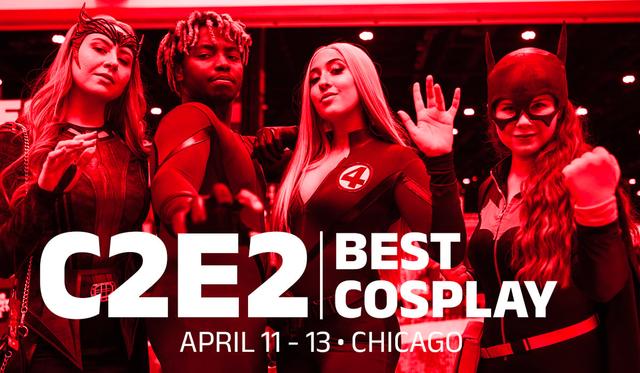If you click on a link and make a purchase we may receive a small commission. Read our editorial policy.
Through the looking glass: Batman’s odyssey through the multiverse finally brings him home
DC marks Batman’s 900th issue with a multiversal celebration of the Dark Knight’s extensively varied legacy

Chip Zdarsky closes out the latest arc of his Batman run, “The Bat-Man of Gotham,” with Batman #135, which also carries the legacy numbering as Batman #900. To mark the milestone occasion, Zdarsky is not only joined by artists Mike Hawthorne, Jorge Jimenez, and Mikel Janin but also takes full advantage of the oversized issue to celebrate the entire history of the Dark Knight. Packed with cameos and supporting appearances of classic iterations of Batman and the Joker throughout the characters’ history in comics, film, and television, the issue sees the main DC Universe’s Caped Crusader try to return to his own reality.
Here’s how “The Bat-Man of Gotham” quietly set the stage for its surprise journey through the DC Multiverse, some of the more prominent Batmen to appear in the landmark issue, and how DC has steadily been embracing the infinite possibilities of its restored multiverse across a variety of media.
Spoilers below for Batman #135/#900. Be warned.
The Bat-Man of Gotham

Zdarsky and Jimenez’s first arc on Batman, “Failsafe,” ends on a cliffhanger with the rogue artificial intelligence Failsafe apparently vaporizing Batman as it seeks to subjugate the DCU to its twisted vision of justice. Instead, Batman is transported to an alternate reality where Gotham is ruled by villainous corporate mogul Darwin Halliday, with Halliday striking fear under his costumed alter ego as the Red Mask. As Batman confronts the Red Mask, he discovers that Halliday’s corporate experiments gives him a window into the multiverse, along with the realization that he is this universe’s version of the Joker.
Loaded with raw multiversal energy, Halliday uses a portal to flee into the DC Omniverse (which encompasses all forms of DC’s multimedia depictions) with the energy he carries potentially harmful to all of reality. The Dark Knight follows his nemesis, determined to defeat and contain the danger that Halliday possesses before returning to the DCU. However, though Batman is able to follow Halliday’s unique energy signature with a special tracker, he is unprepared for the different universes that he stumbles across as he pursues Halliday on his impromptu cosmic odyssey.
Magical mystery tour of the multiverse

The first universe that Batman finds himself in while chasing the Red Mask is the world of the Tim Burton Batman movies, noticing billboards of Jack Nicholson’s Joker and Michael Keaton’s fan-favorite depiction of Bruce Wayne. This incarnation of Batman has loomed especially large for DC in recent years, with Sam Hamm and Joe Quinones’ Batman ‘89 comic book miniseries continuing the story beyond the events of Batman Returns while Keaton returns to the role with The Flash this summer. And before the DCU Batman can regain his bearings and properly compare notes, he is shunted through a number of other realities, encountering different versions of himself.
Among the more notable stops on Batman’s fantastic voyage are two different versions of the DC Animated Universe, one set during the Batman: The Animated Series era and another during Batman Beyond. The Batman of the Arkham video games makes a brief appearance, pointing out how he became more haunted in the wake of his Joker dying, serving as a clear warning sign for how Bruce’s life could go from the ongoing feud with his nemesis. However, one of the most inspiring encounters Batman has is with the ‘60s television iteration played by Adam West who, despite the campy trappings around him, provides his own valuable advice and secret weapon to the DCU Batman.
Film, television, and video games aren’t the only depictions of Batman to get a shout-out in the issue, with several different comic book iterations making blink-and-you-miss-it cameos. Everyone from the vampires of Doug Moench and Kelley Jones’ Red Rain to the steampunk world of Brian Augustyn and Mike Mignola’s Gotham by Gaslight make an appearance to guide the DCU Batman. The most substantial alternate universe appearance is a meeting between Batman and the aged Caped Crusader of Frank Miller’s The Dark Knight Returns. The significance behind this return makes perfect sense, as Miller completely redefined the superhero’s mythos with his 1986 miniseries.
DC’s infinite scope

Batman’s foray in the multiverse is just the latest in a line-wide initiative by DC to embrace the possibilities of the multiverse. For years, DC didn’t officially have a multiverse at all following its canonical destruction at the end of Marv Wolfman and George Perez’s Crisis on Infinite Earths as a means to streamline continuity. This decision would be undone with 2005’s Infinite Crisis by Geoff Johns, et. al, with the restoration of a multiverse, albeit limited to 52 universes at the time. It wasn’t until Joshua Williamson and Daniel Sampere’s Dark Crisis on Infinite Earths that the multiverse would expand into an infinite number of universes once again.
Even before that, DC stories had begun increasingly veering into the cosmic potential presented by a multiverse, regardless of the number of universes available. 2015’s Convergence posits that DC’s universes existed as a set of pocket dimensions stored away by Brainiac while Geoff Johns and Gary Frank’s Doomsday Clock introduces the concept of the Omniverse, a set of realities beyond the conventional multiverse constantly evolving with each passing generation. This was followed by Scott Snyder and Greg Capullo’s Dark Nights: Death Metal, with the heroes retaining a passing knowledge of their past existences across the restored multiverse.
Stories like these made everything in DC history additive-- now every story matters on some level, each working as a part of the ever-growing tapestry that is the DCU and as alternate takes and adaptations on the core universe.
Across the Bat-Verse

While other characters have played around with the DC Multiverse, including a Harley Quinn story arc where she addresses the multiverse with her usual zany humor, there really is no character better suited for such an adventure than Batman. DC’s flagship superhero has so many distinct eras and designs, often reflecting the state of the wider DCU, from the emphasis on wacky science fiction in the ‘50s to the darker tones of the ‘80s and ‘90s. As showcased by Batman #135, the character has also starred in a number of non-canonical stories, allowing for vastly different permutations of the Caped Crusader.
Batman is also one of the first DC characters to receive a film adaptation, with Lewis Wilson starring as the hero in a 1943 serial, predated only by 1941’s The Adventures of Captain Marvel (back when Shazam went by that moniker and still was the property of Fawcett Comics). Since then, Batman has appeared in over a dozen feature films and even more television and video game iterations. There is even a precedent for Batman meeting different versions of himself, interestingly, in a 75th anniversary animated short film by Bruce Timm and Darwyn Cooke, with the Batman Beyond characters meeting other incarnations of the Dark Knight.
It’s unclear how the DCU Batman’s tour of the multiverse will impact the rest of Zdarsky’s run on the title but, even if it's written off as an extended fever dream, it’s always cool to see a canonical acknowledgment of the Dark Knight’s extensive legacy. “The Bat-Man of Gotham” solidifies that, no matter what reality, Batman and the Joker will always be at odds, but the story also, by its ending, quietly underscores that Batman needs a Robin. The chance to mix it up with other Caped Crusaders not only highlights the superheroes’ similarities but also their differences while remembering to celebrate Batman in all of his varying forms throughout his 94-year history.
Batman #135 is written by Chip Zdarsky, illustrated by Mike Hawthorne, Jorge Jimenez, and Mikel Janin, inked by Adriano di Benedetto, Jorge Jimenez, and Mikel Janin, colored by Tomeu Morey and Romulo Fajardo, Jr., and lettered by Clayton Cowles. The next exciting story arc begins in Batman #136, on sale June 6 from DC Comics.
Follow Popverse for upcoming event coverage and news
Find out how we conduct our review by reading our review policy
Let Popverse be your tour guide through the wilderness of pop culture
Sign in and let us help you find your new favorite thing.
















Comments
Want to join the discussion? Please activate your account first.
Visit Reedpop ID if you need to resend the confirmation email.